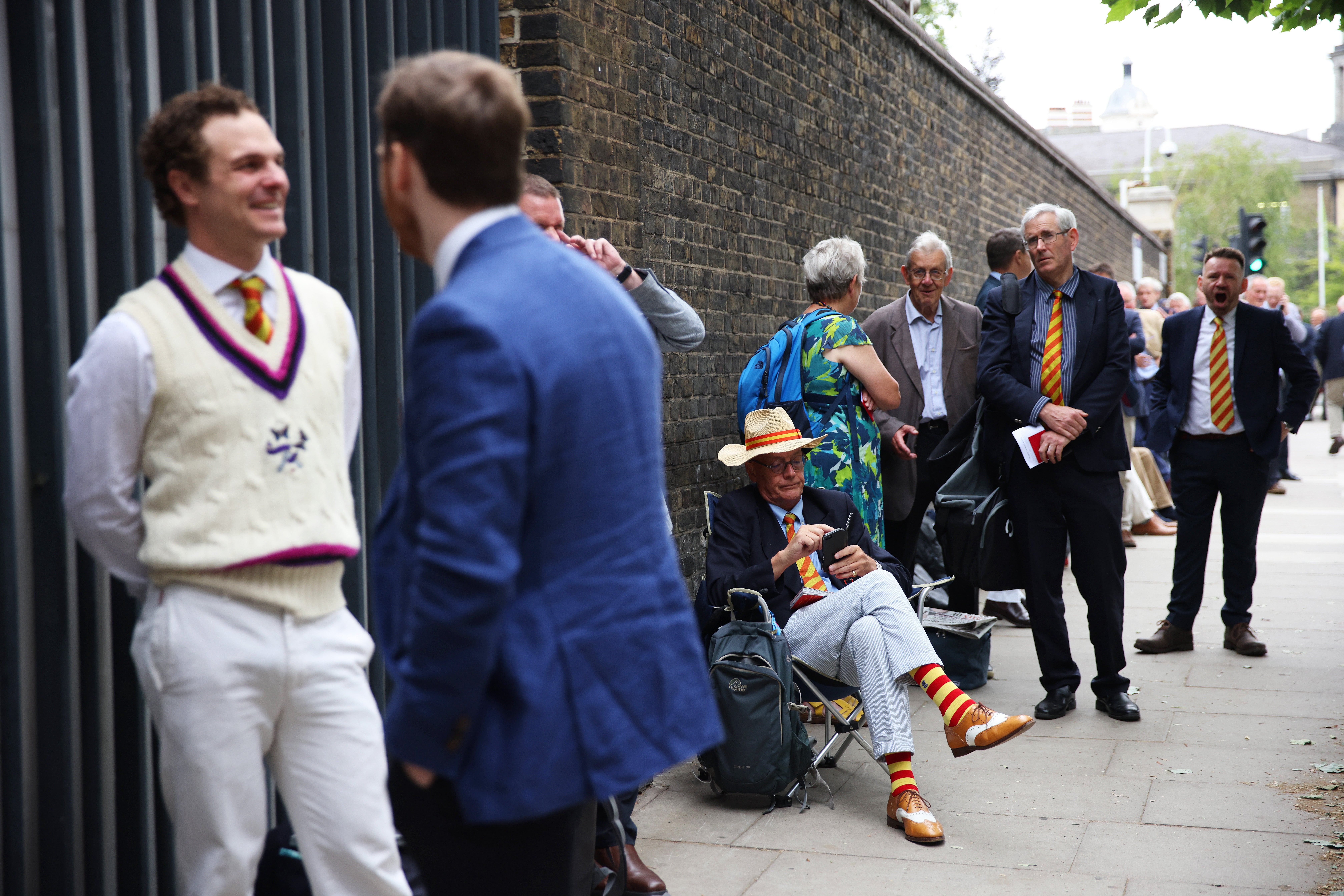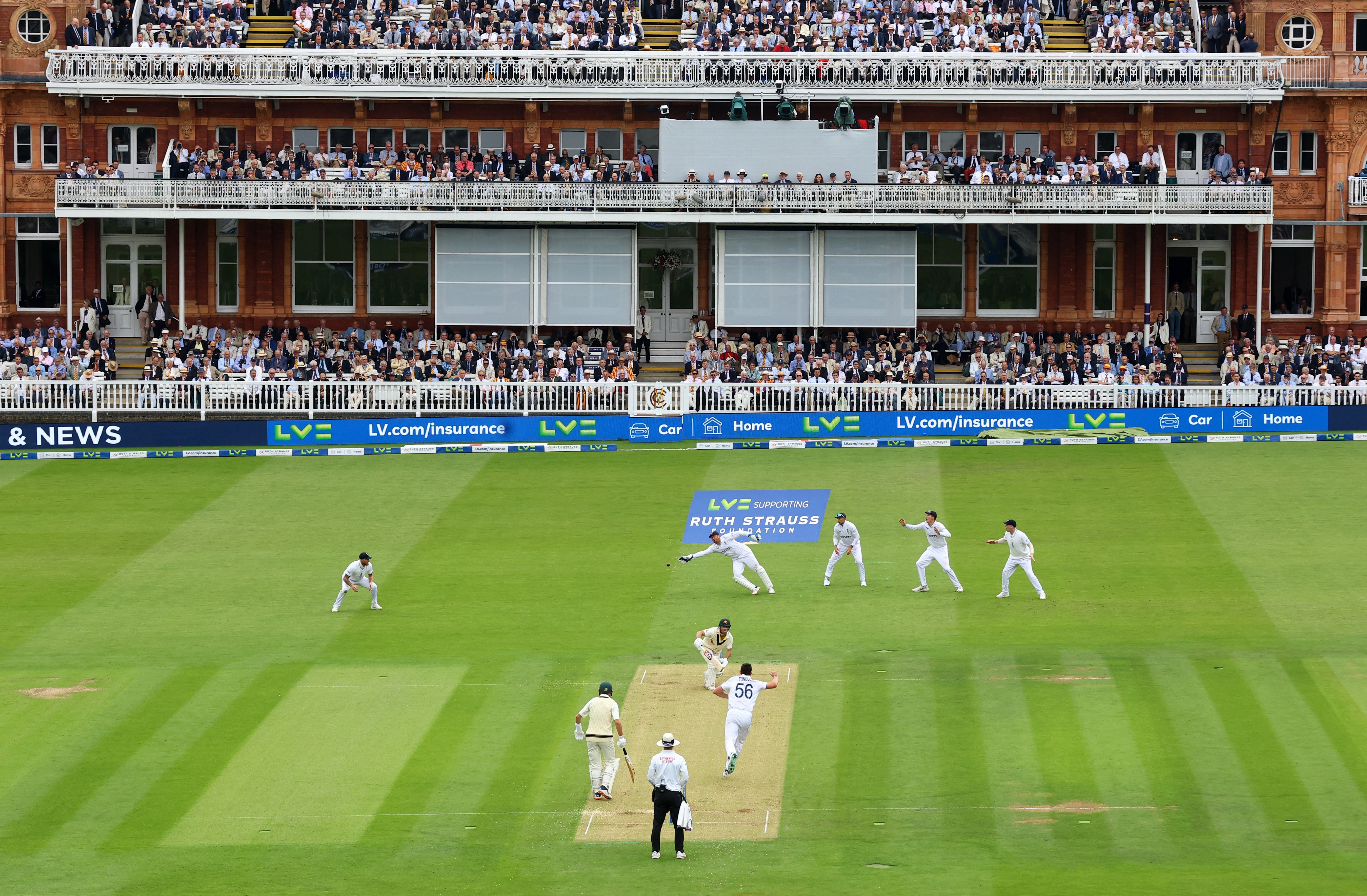Champagne and a sea of egg and bacon: Lord’s lays bare cricket’s class divide
The home of cricket hosts the second Ashes Test, but, as Sonia Twigg discusses, Lord’s provides insight into the sport’s troubling past and may not be helping its future

Your support helps us to tell the story
From reproductive rights to climate change to Big Tech, The Independent is on the ground when the story is developing. Whether it's investigating the financials of Elon Musk's pro-Trump PAC or producing our latest documentary, 'The A Word', which shines a light on the American women fighting for reproductive rights, we know how important it is to parse out the facts from the messaging.
At such a critical moment in US history, we need reporters on the ground. Your donation allows us to keep sending journalists to speak to both sides of the story.
The Independent is trusted by Americans across the entire political spectrum. And unlike many other quality news outlets, we choose not to lock Americans out of our reporting and analysis with paywalls. We believe quality journalism should be available to everyone, paid for by those who can afford it.
Your support makes all the difference.It was almost with a sense of irony that it was the Lord’s Test just two days after cricket was found to have racism, sexism, elitism and class-based discrimination “widespread and deeply rooted” in the sport.
The damning report from the Independent Commission for Equity in Cricket (ICEC) was splashed across the back pages on Tuesday, ahead of the start of the second Ashes Test on Wednesday, but arguably it is at Lord’s that the report’s findings are most evident.
A walk around the outside of the stands anytime after the first hour’s play will take you past people drinking champagne or wine on picnic tables and blankets they have brought themselves to set up in the gardens, and nowhere in sight of the cricket.
The eye-watering prices are what make the headlines, ranging from £60 to £170 for a single adult but there is so much more to the occasion than that.
The Harris Garden, a Veuve Clicquot champagne tent and other spots fill up throughout the day as empty seats seem to make their appearance inside the stands, it is not something that happens anywhere else.
Hospitality seats range from £999 to £1,599, and Lord’s does not publish the cost of hiring a private box for the day. But it is a huge earner, some of the public bars can take up to £15,000 on the first two days of a big Test match, and nothing is bigger than the Ashes.
Then there is the queue. Not that queue, but one that at one point in the morning wound its way almost around an entire block, filled with Marylebone Cricket Club members trying to get their desired seat in the Lord’s Pavilion, where the England and Australian players will pass through from the dressing room to the pitch. The first person in the queue got there at midnight, getting there at 5.30 in the morning was only good enough for No.250.
The waiting list to become an MCC member is approximately 29 years and in order to be nominated a person has to be at least 16 years old and proposed or nominated by a current senior member. There are other ways around it, including through a playing route, but the proposed route still applies.

The Lord’s Test has taken on a certain status in the game, Australian players and their families were given a tour of the Home of Cricket, and it certainly is a sight to behold, but considering the recent report, it can be viewed in a different way.
There are not many events in London where there will be a greater diversity, in terms of gender, class and race from those serving drinks and food in the pavilion than those making up its members.
It must be said that the England and Wales Cricket Board has improved since 2018 when trying to attract more diverse groups to the game, especially with the introduction of Chance to Shine, which works within over 4,000 primary schools every year.
The Surrey-based ACE programme, which was started in 2020, has increased Black participation and has had success, but overall cricket’s issues remain.

Only two of the England team taking centre stage (Ben Stokes and James Anderson) did not attend a private school at any point during their upbringing (Harry Brook and Joe Root gained cricket scholarships later on). It’s a percentage that is unlikely to significantly change anytime soon when considering those watching rather than those playing.
A place that holds an Eton vs Harrow match, and Oxford vs Cambridge, is unlikely to attract a wider audience that the England and Wales Cricket Board is so desperate to attract to the game. Test match cricket, especially under the Bazball transformation, may attract more state school pupils to pick up a bat and ball, but a trip to Lord’s might leave them feeling more out of place than ever in the sport.



Join our commenting forum
Join thought-provoking conversations, follow other Independent readers and see their replies
Comments